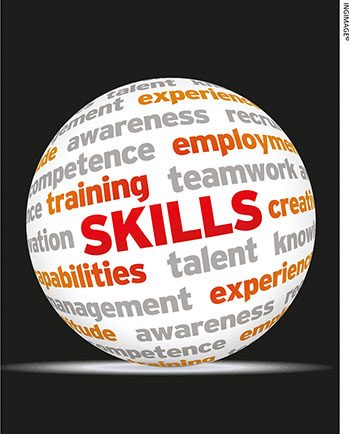THE KNOWLEDGE WORKER
THE LEARNING ORGANISATION
Archana Law advocates continuous learning for competitive advantage

Whether they consciously choose to or not, all organisations learn. Some deliberately advance organisational learning, developing capabilities that are consistent with their objectives while others don’t make a focussed effort and therefore, acquire habits that are counterproductive.
Continuous improvement requires a commitment to learning – both individually and collectively.
Peter Senge, who popularised ‘learning organisations’ in his book titled ‘The Fifth Discipline: The Art and Practice of the Learning Organization,’ described them as places “where people continually expand their capacity to create the results they truly desire, where new and expansive patterns of thinking are nurtured, where collective aspiration is set free and where people are continually learning how to learn together.”
To achieve these ends, Senge suggested the use of five ‘component technologies’ as follows: systems thinking, personal mastery, mental models, shared vision and team learning.
In a similar vein, Ikujiro Nonaka characterised knowledge creating companies as places where “inventing new knowledge is not a specialised activity… it is a way of behaving – indeed, a way of being in which everyone is a knowledge worker.”
So how would leaders know when their companies have become learning organisations? And what concrete changes in behaviour are required, and what policies and programmes must be in place? How do you get from here to there?
Learning organisations and the people in them learn constantly from everything they do. They use their own experiences and those of others to improve performance. And they learn from their successes and failures. Continuous learning is systemically built into the company’s DNA and infrastructure. The value of continuous learning is espoused, driven, modelled, and rewarded by the CEO and senior management.
A learning organisation is skilled at creating, acquiring, transferring knowledge, and modifying its behaviour to reflect new knowledge and insights. The simple truth is that new ideas are the essential triggers but without accompanying changes in the workplace, only the potential for improvement exists. This is a surprisingly stringent test, which many universities and even some consulting firms fail! For example, TQM is taught in many business schools but only a few organisations are using it to guide their decision making.
What’s more, some companies that are engaged in advising clients on social dynamics and small group behaviour may be notorious for their own infighting and factionalism!
Organisations that do pass the test – like Honda, Corning and General Electric, to name a few – have by contrast become adept at translating new knowledge into new ways of behaviour. They actively manage the learning process to ensure it occurs by design rather than chance.
By creating systems and processes that support learning and integrating them into the fabric of daily operations, companies see a higher value.
In 1983, Xerox launched the ‘Leadership Through Quality’ initiative and trained its employees in problem solving techniques. A systematic six step process continues to be used for virtually all decision making with the result being a common vocabulary and consistent company wide approach to problem solving.
Failure is the ultimate teacher! Boeing introduced both 737 and 747 aircraft with much fanfare and also serious problems. To ensure that the problems weren’t repeated, senior managers commissioned a high-level employee group called Project Homework, to compare the development processes of these two aircraft with the 707 and 727 – two of the company’s most profitable aeroplanes. The lessons learned over three years included hundreds of recommendations, an inch thick booklet, and transfers to the 757 and 767 startups where guided by experience, the team produced the most successful error free launches in Boeing’s history.
At the heart of this approach is a mindset that enables companies to recognise the value of productive failure (leading to insights and collective wisdom), as contrasted with unproductive success where something succeeds or fails more by fluke rather than design.
Futuristic companies trace learning ROI through three overlapping stages: the cognitive stage – where employees are exposed to new ideas, expand their knowledge and begin to think differently; the behavioural stage – where employees begin to internalise new insights and alter their behaviour; and the performance improvement stage – which reflects changes in behaviour.
This leads to measurable improvements in results such as superior quality, improved delivery, increased market share or other tangible gains. In the words of Albert Einstein, “we start dying when we stop learning!”



